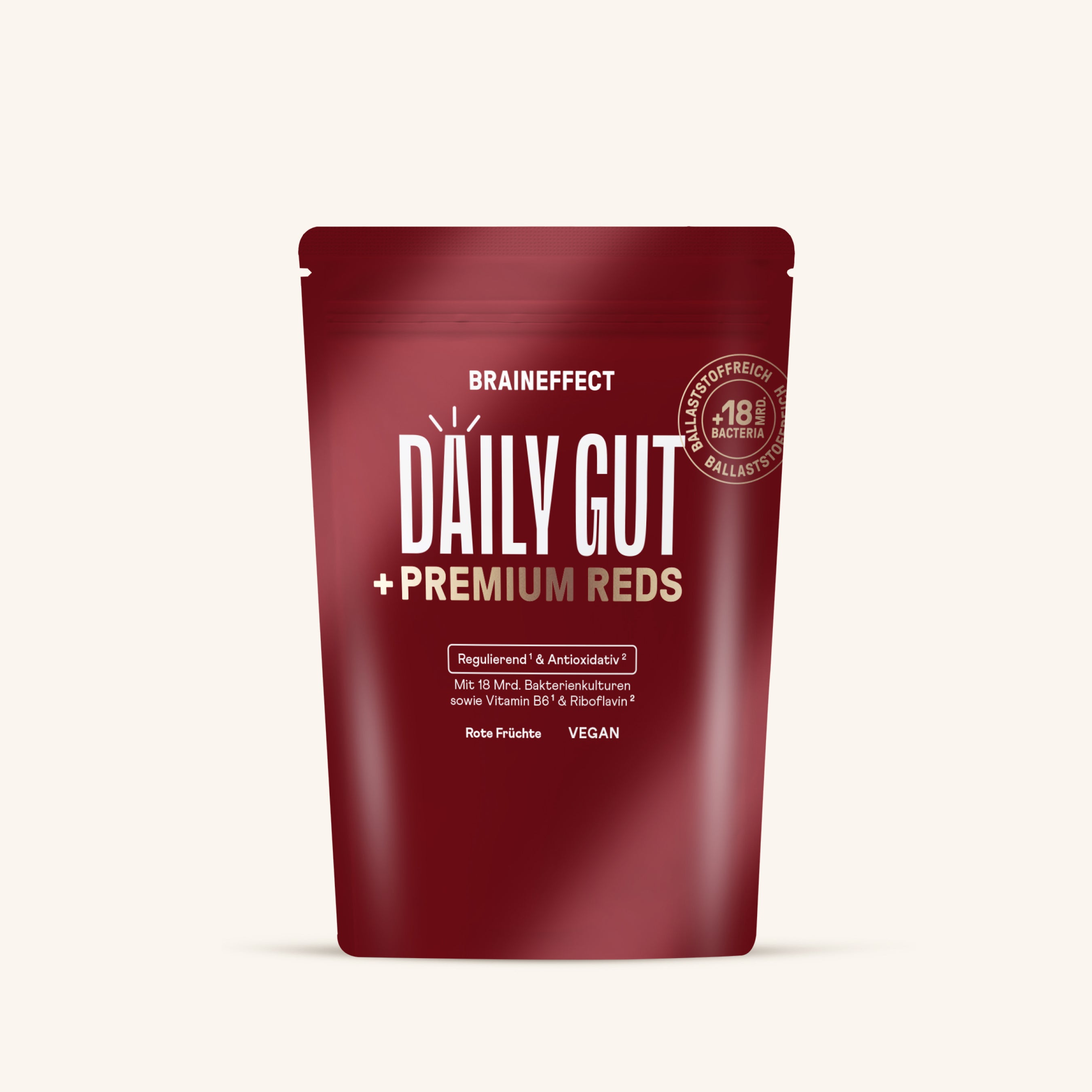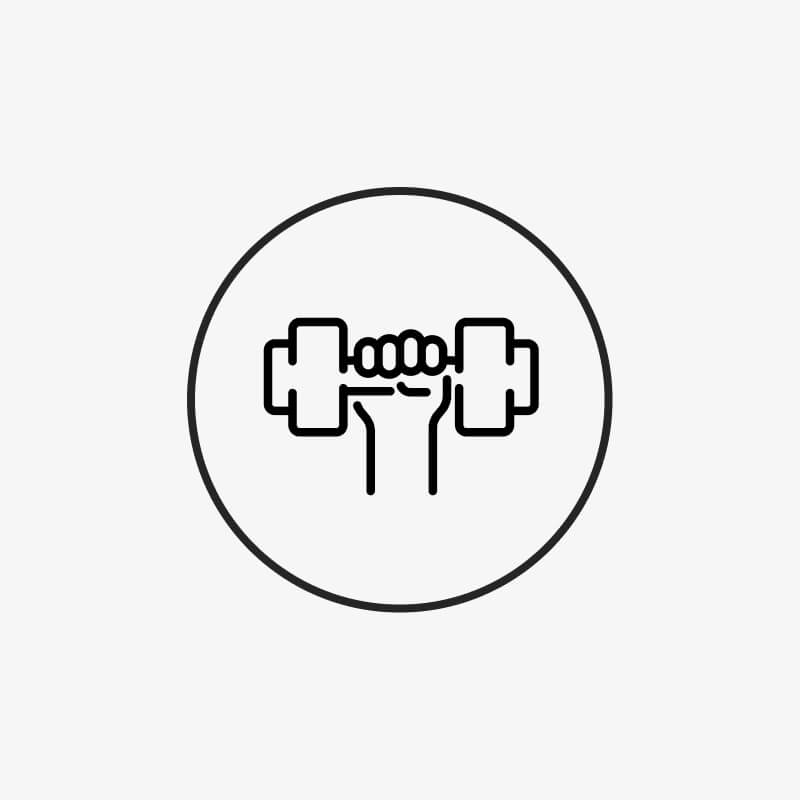Intermittent fasting has evolved from a nutritional trend to a genuine recommendation for more power and energy. Alternating between eating and fasting phases brings you numerous benefits that boost your mental and physical performance. Whether you choose the 16/8 or 36/12 version, with the right plan, you can get started.
Table of contents
1. What is intermittent fasting?
The term "intermittent fasting" is derived from the Latin "intermittere" meaning "to interrupt. " Fasting is performed only in daily intervals, interrupted by periods of eating.
You may also know this fasting method as intermittent fasting or partial fasting . All three terms mean the same thing: alternating between a fasting phase , in which you abstain from food completely, and an eating phase , in which you eat your meals as usual.
2. What are the benefits of intermittent fasting?
The big advantage of intermittent fasting for you: Since you eat normally during the food intake phase, you won't experience cravings or feelings of weakness .
Your body will continue to receive all the important nutrients, but only for a limited period of time, followed by a phase of fasting.
Intermittent fasting has a number of positive effects on your body and mind that become noticeable after just a short period of time.
Many people who have practiced intermittent fasting over a longer period of time report positive experiences:
More energy through intermittent fasting
During the fasting phase , your body has time to focus on detoxification and cell renewal . This is because the resting phase pauses the digestion of food, which otherwise requires almost all of your metabolism's concentration.
Fasting causes your body to produce more growth hormones for cell renewal . These hormones boost fat metabolism and support muscle building.
At the same time, your immune system recovers and your sleep quality improves . The result: you're less tired and have more energy to reach your full potential.
BRAINEFFECT HACK : If you often take an unnecessarily long time to fall asleep in the evening, our SLEEP SPRAY with melatonin can help you shorten the time it takes to fall asleep.
Better concentration through intermittent fasting
Restful sleep also benefits your brain performance . Furthermore, intermittent fasting reduces oxidative stress and can increase the growth of new nerve cells , as a study on rats showed [2].
Another benefit of intermittent fasting for your concentration : the release of the hormone BDNF (Brain-Derived Neurotrophic Factor) increases, as Marc Paul Mattson of the Johns Hopkins University School of Medicine discovered during a study [3].
BDNF has a positive effect on your neurons (nerve cells) in the peripheral and central nervous system and thus supports your mental performance: abstract thinking, logical reasoning, organizational thinking and memory performance are supported.
BRAINEFFECT HACK : Combat mental slumps in the future with these practical FOCUS capsules. The vitamins B5 and B12 contained in these capsules support your brain performance.
Intermittent fasting increases fat metabolism
During the fasting phase, your fat metabolism works at full speed because the longer your body goes without food , the more it taps into its iron fat reserves .
Approximately 8 to 12 hours after the last meal, the metabolism switches to ketosis and burns fat without losing muscle mass. A study from the University of Illinois [1] shows that intermittent fasting helps reduce fat tissue.
The overweight participants lost a significant amount of body fat during the 12 weeks of guided intermittent fasting. If you want to switch to ketosis , intermittent fasting makes it easier to start this long-term diet.
BRAINEFFECT HACK : Our MCT oil ROCKET C8 can be converted into ketone bodies by your body particularly quickly.
Take-Home Message #1: Intermittent fasting has many benefits for optimizing your performance. In addition to boosting fat metabolism, it also improves your physical and mental performance and makes it easier to enter ketosis.
Further benefits of intermittent fasting
3. What types of intermittent fasting are there?
There are four different ways you can practice intermittent fasting . The instructions are quite simple : Each option specifies the length of the fasting and eating phases.
You decide which form works best for you, depending on your eating habits and daily routine. Beginners usually start with 16/8, while advanced fasters even fast for entire days. Just give it a try!
16/8 variant
With the 16/8 method, you eat your meals within 8 hours and maintain a fasting period of 16 hours. This method is best for long-term intermittent fasting. 16/8 also makes it easier to get started with intermittent fasting.
Example: You eat your first meal at 12 noon and your last at 8 p.m. After 8 p.m., you fast until 12 noon the next day.
36/12 variant
If you're comfortable with fasting and can easily go a day without food, you can try the 36/12 diet. This involves eating only every other day within 12 hours.
Example: You eat from 8 a.m. to 8 p.m. You fast the following night, the following day, and another night until 8 a.m., and you're only allowed to drink unsweetened beverages. It sounds hardcore, and for many it is, so it's a matter of taste.
20/4 variant
Similar to the 16/8 diet, this diet follows a 20/4 rhythm: 4 hours of eating, 20 hours of fasting. This version is also for advanced practitioners who can go long periods without eating.
Example: You eat your first meal at 2 p.m. and your last at 6 p.m. You fast the following night and morning until 2 p.m.
Take-Home Message #2: There are different ways to do intermittent fasting. The instructions are quite simple: Fasting phases and eating phases alternate in a set rhythm. 16/8 is ideal for beginners.
4. Tips on how to start intermittent fasting
The 16/8 variant makes starting easier
If you're new to intermittent fasting, the 16/8 method is the perfect starting point. It allows you to eat enough food within 8 hours of the day.
The fasting phase lasts overnight , when you're asleep anyway and don't have to think about whether you might need a snack to satisfy your hunger. If the 16/8 version is easy for you, you can gradually switch to one of the other versions and even do entire days of fasting.
Persevere: The first few days are the hardest
A warning: The first few days are the hardest. You may find the transition difficult at first if you're used to eating a meal late at night or needing a hearty breakfast early in the morning.
Hang in there, because after a few days, the feeling of hunger during the fasting phase will disappear , and you'll notice the positive effect the new rhythm has on your performance. Until then, always remember: appetite is often purely mental. The more you think about food, the stronger the desire for it becomes.
During the first few days, it is best to distract yourself with sport or other activities and drink water or tea as soon as you feel hungry .
Sport promotes fasting success
Exercise is good anyway and supports your success with intermittent fasting. Because exercise metabolizes your last meal more quickly, depletes your glycogen stores , and thus you enter the fasting phase and thus ketosis more quickly. Exercising in the morning before your first meal further accelerates the process.
Don’t eat sugar!
Do you want the full benefits of intermittent fasting? Eliminate sugar in any form. Sugar provides glucose. Your goal with intermittent fasting, however, is to promote ketosis.
And the more sugar your body gets , the less energy it draws from fat . Healthy foods are therefore essential for intermittent fasting to boost your energy and brain performance.
This means: sugar and fast food are taboo, and carbohydrates should also be consumed in small amounts for optimal results. Instead, you can indulge in fish, meat, eggs, and vegetables.
5. Intermittent fasting: Instructions for the 16/8 variant
The better you prepare for intermittent fasting, the easier it will be for you:
Set mealtime
The key to the 16/8 diet is the 16-hour fast/8-hour eating cycle. Consider this beforehand: Are you the type of person who prefers a hearty breakfast and can go without a meal in the evening?
Or do you not need to eat immediately after getting up in the morning and could wait until lunchtime for your first meal? You choose your eating rhythm accordingly, e.g.
- 9am first meal, 5pm last meal or
- First meal at 12 noon, last meal at 8 p.m.
You decide when to start based on your personal eating habits , and you should then have your last meal of the day 8 hours later.
Since digestion naturally slows down after 10 p.m., you should finish your eating phase by 9 p.m. at the latest. The late version is actually advisable, as the benefits of fasting are greater in the morning.
This is when fat burning and hormone production work particularly well. So, if you're a breakfast eater, you should gradually shift the time of your first meal closer to lunchtime to reap even more benefits. Think about it carefully—it's worth it!
Permitted drinks during fasting
Drinking is allowed during the fast! It should be the right kind, though. Water is always good , anytime, as are unsweetened herbal tea and ginger tea .
A cup of coffee is a wonderful help when hunger strikes. Unsweetened coffee and green tea are also okay . However, not in the evening, as the caffeine can deprive you of sleep.
Create an intermittent fasting plan
The better you prepare for your daily routine, the easier it will be for you to start and stick with intermittent fasting.
Therefore, create a food and meal plan that you'll always have on hand until you've developed a certain routine. Here's an example if you've decided to start your 16/8 fast at lunchtime:
-
Morning: After getting up, it's best to bridge the hours until your first meal with tea or coffee. Even a bulletproof coffee or butter coffee is allowed, as it contains no carbohydrates and supports ketosis thanks to the MCT oil it contains.
First meal : Your first meal isn't until 12:00 p.m. No matter when you eat your first meal, it should ideally be low-carb. A combination of protein and vitamins, such as salmon and spinach or avocado, is ideal for lunch.
-
Afternoon snack : To be productive in the afternoon and prevent cravings from arising, you can eat a handful of nuts or a snack made up of nuts and fruit.
Last meal : At 8 p.m., you end your eating phase again with a protein-rich meal combined with vegetables. For example, you could make yourself an omelet. It's quick to prepare and provides you with protein.
Take-Home Message #3: The easiest way to get started is with the 16/8 method. Intermittent fasting works best with a plan where you write down your new daily routine and meals.
6. Talking Brains Podcast Episode 33: Intermittent Fasting - Insider Tip for Better Performance - Prof. Kuno Hottenrott
7. Dietary plans for intermittent fasting
Intermittent fasting works best with a meal plan that you create in the beginning. You can create such plans for free online.
Recipes will help you stick to your intermittent fasting diet and resist the temptation of high-carb snacks. Here are a few suggestions for the first few days:
Breakfast recipes:
During the fasting phase, your metabolism has slowly switched to ketosis – you don't want to force it back into glucose utilization with carbohydrates. Therefore, it's better to have a Bulletproof Coffee or a protein shake for breakfast , e.g.
- 1/2 avocado
- 1 handful of spinach
- 200 ml almond milk
- 1 tbsp MCT oil ROCKET C8
- high-quality protein powder
- possibly water for consistency
If you prefer something to bite into, an omelette with spinach and tomato is a delicious alternative:
- 2 eggs
- 1 spring onion
- 1 handful of fresh spinach
- 1 tomato
- 25g feta
- salt and pepper
Fried egg with bacon and fried mushrooms is almost a breakfast classic:
- 3 eggs
- 3-4 strips of bacon
- 200g mushrooms
- Chives or parsley
Recipes for lunch or dinner:
A mix of proteins and vitamins is still your best friend, so you can have a combination of fish or meat and vegetables for lunch and dinner, e.g.
Chicken breast with spinach and feta
- 120g chicken breast
- 250g spinach
- 50g feta
- 1/2 onion
- 1 garlic clove
- 2 tbsp rapeseed oil
- salt and pepper
Dice the onions, press the garlic, and fry briefly in oil. Add the spinach. Season the chicken and fry in the oil as well. Then season the spinach to taste and crumble the feta over it.
Salmon with vegetables
- 150g salmon
- 1 zucchini
- 6 cherry tomatoes
- 1 spring onion
- 1/2 garlic clove
- 1 dash of lemon juice
- some thyme
- 1 tsp olive oil
- salt and pepper
Preparation is super simple: Place baking paper on a baking sheet, spread the chopped vegetables on it, add the salmon, and drizzle with herbs, spices, lemon, and oil. Then, shape the baking paper into a parcel and bake in the oven at 180 degrees Celsius for 20 to 25 minutes.
Zucchini noodles with tomato sauce and shrimp
- 1 zucchini
- 200g strained tomatoes
- 1 tsp tomato paste
- 1 garlic clove
- 1 tsp olive oil
- 150g shrimp
- salt and pepper
Cut the zucchini into thin strips using a vegetable peeler and let it simmer in boiling salted water for 1 to 2 minutes. Prepare the tomato sauce, cook the shrimp in it, and pour it over the zucchini noodles.
8 . Conclusion
Intermittent fasting is easy to implement with guidance. The most popular and simplest method is the 16/8 rhythm: 16 hours of fasting, 8 hours of eating.
For maximum effectiveness, whether for weight loss or performance improvement, you should stick to a low-carb diet if possible. Intermittent fasting will then make it easier for you to enter ketosis.
BRAINEFFECT HACK : Success begins in the mind. Would you like to tailor your diet to your individual mental performance and receive personalized product recommendations?
Would you like to learn from trained coaches how you can increase your performance to meet your challenges? Then start our free Performance Coach now.
Start Performance Coach now for free
9. Sources
[1] University of Illinois, Chicago, USA. Science Daily. Daily fasting works for weight loss, finds report on 16:8 diet . [https://www.sciencedaily.com/releases/2018/06/180618113038.htm]
[2] Lee J, Duan W, Long JM, Ingram DK, Mattson MP (2000). National Institute on Aging, Baltimore, USA. J Mol Neurosci. Dietary restriction increases the number of newly generated neural cells, and induces BDNF expression, in the dentate gyrus of rats. [https://www.ncbi.nlm.nih.gov/pubmed/11220789]
[3] Mattson MP (2005). Johns Hopkins University School of Medicine, Baltimore, USA. Annu Rev Nutr. Energy intake, meal frequency, and health: a neurobiological perspective. [https://www.ncbi.nlm.nih.gov/pubmed/16011467]














